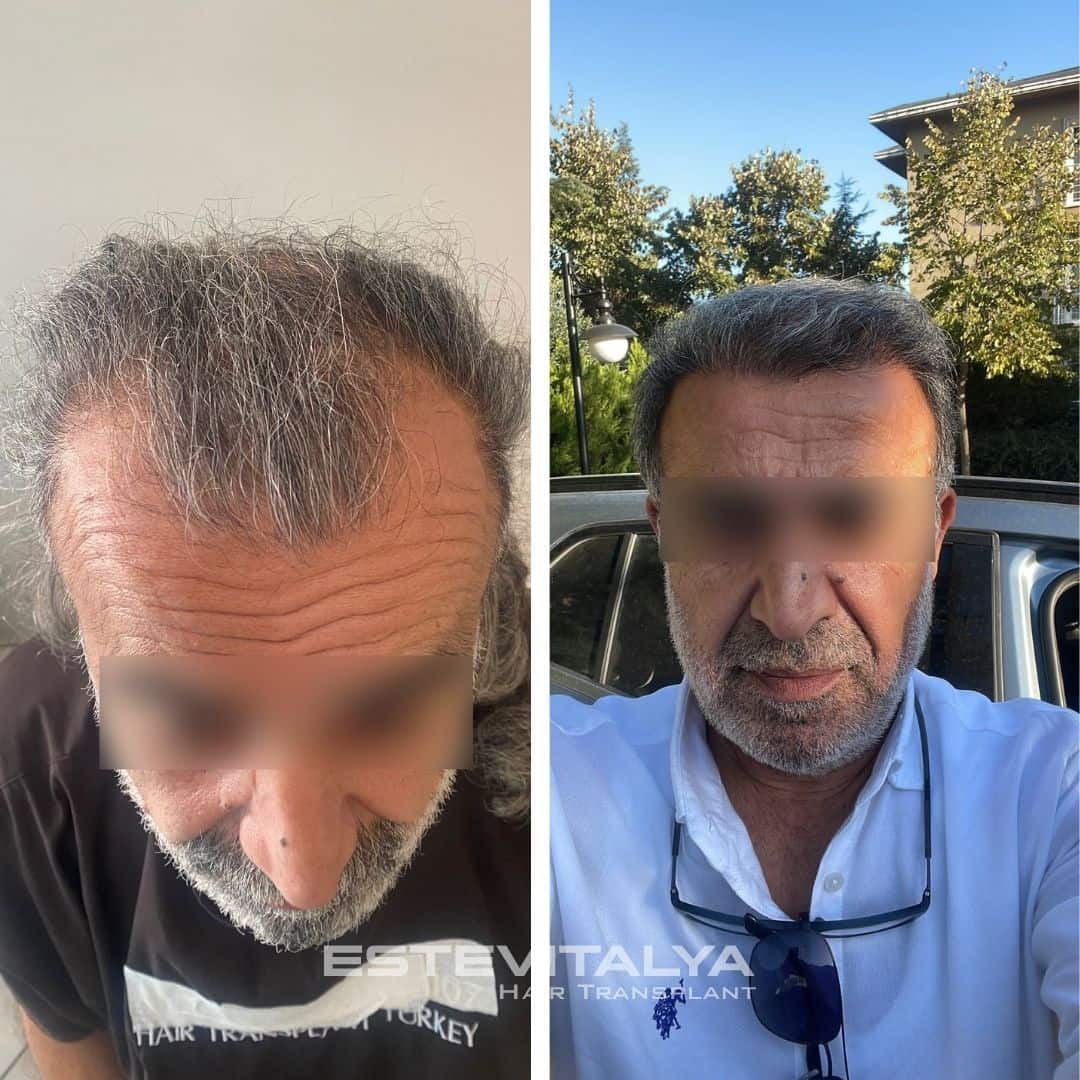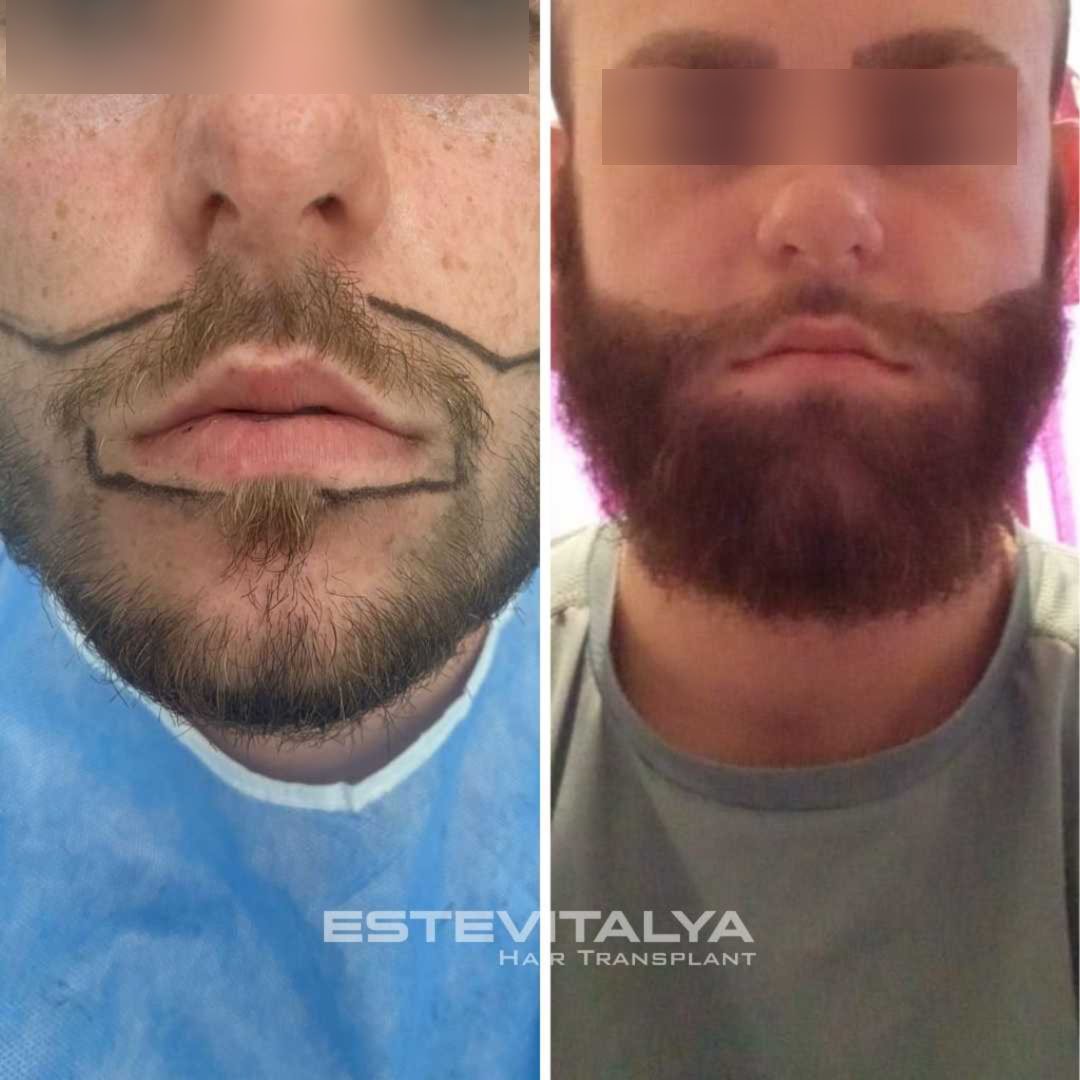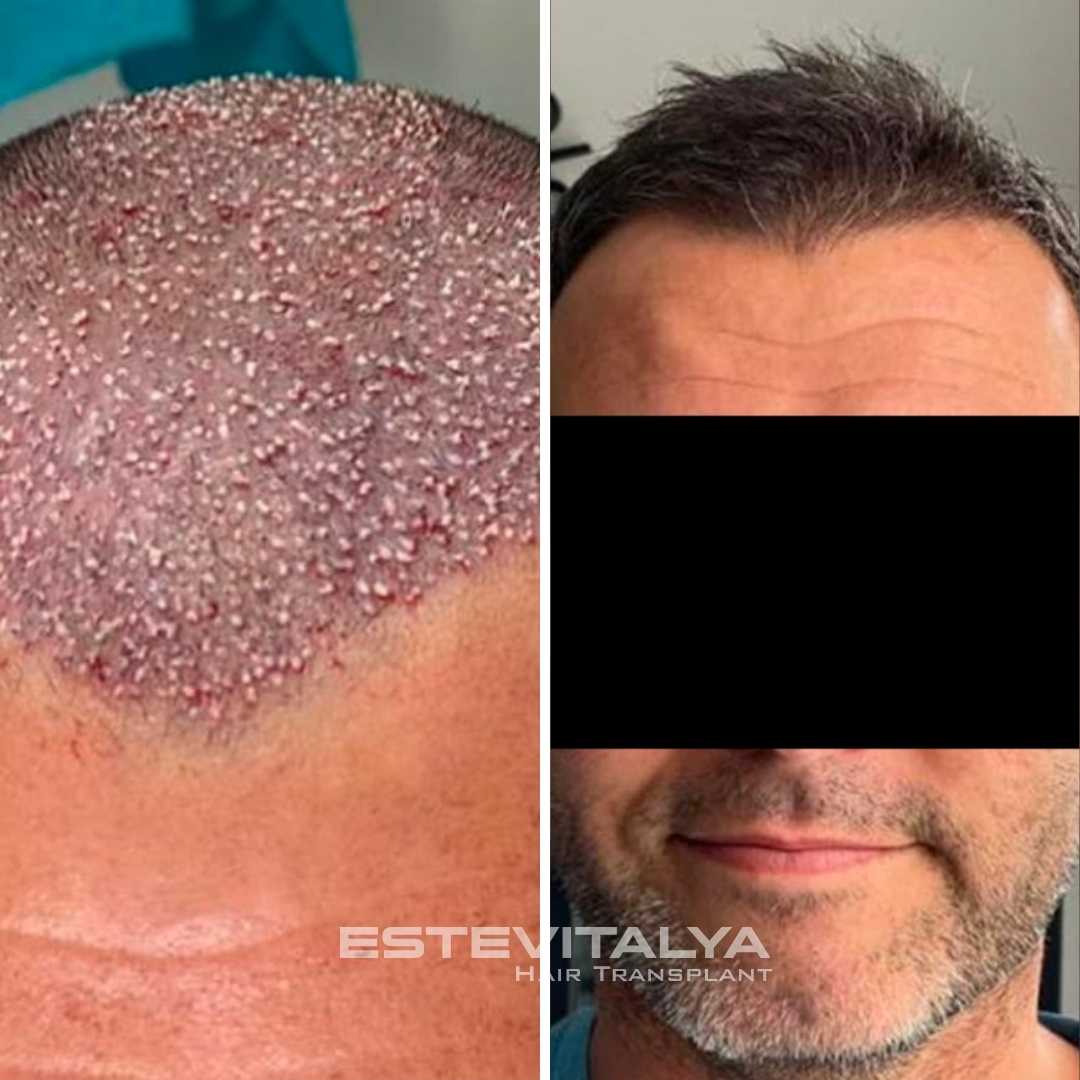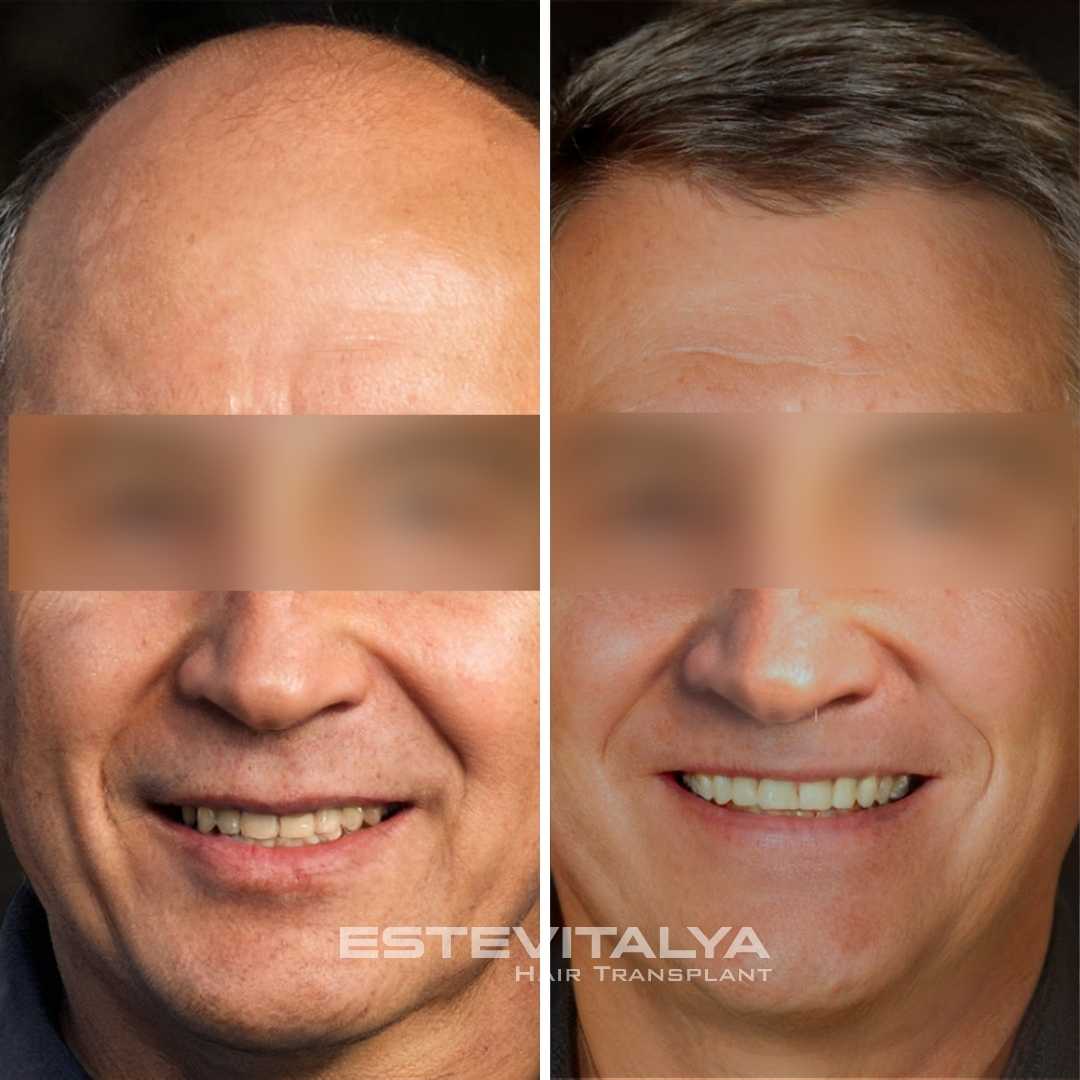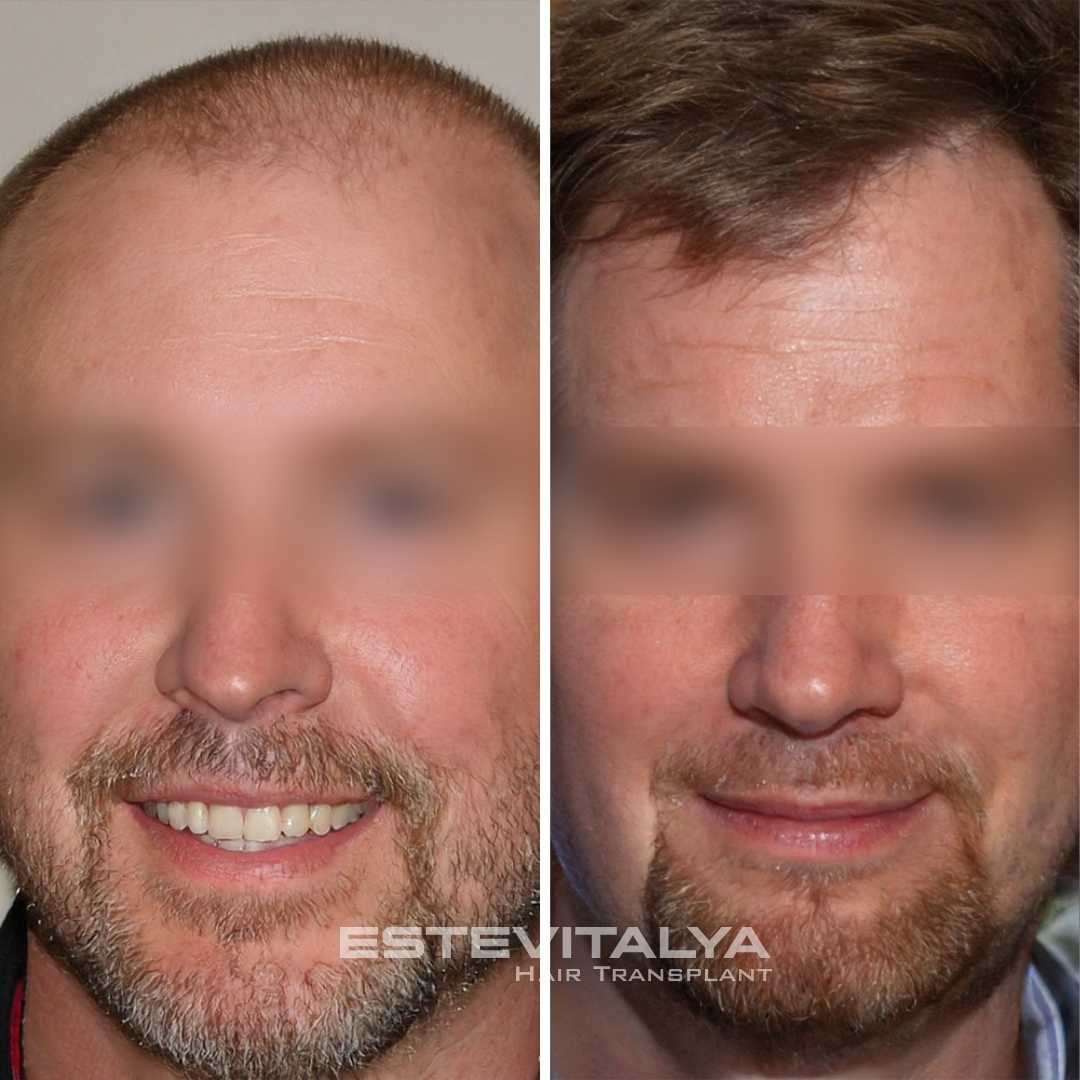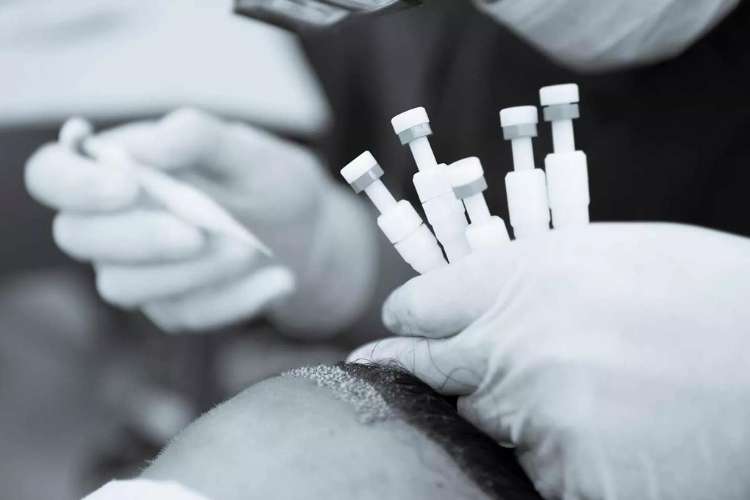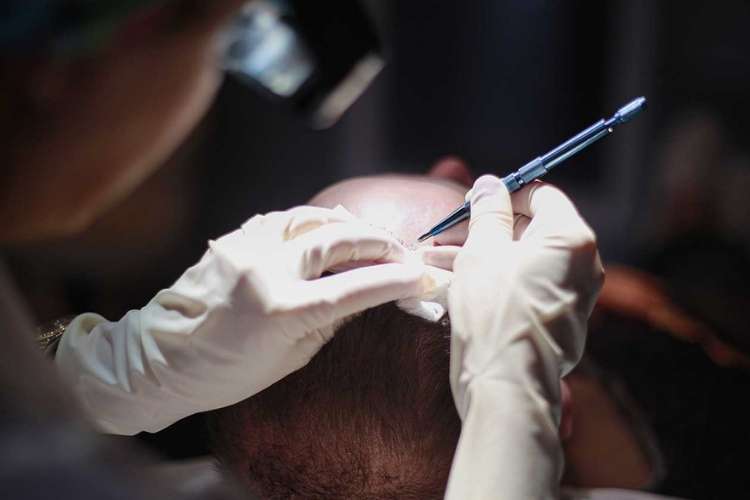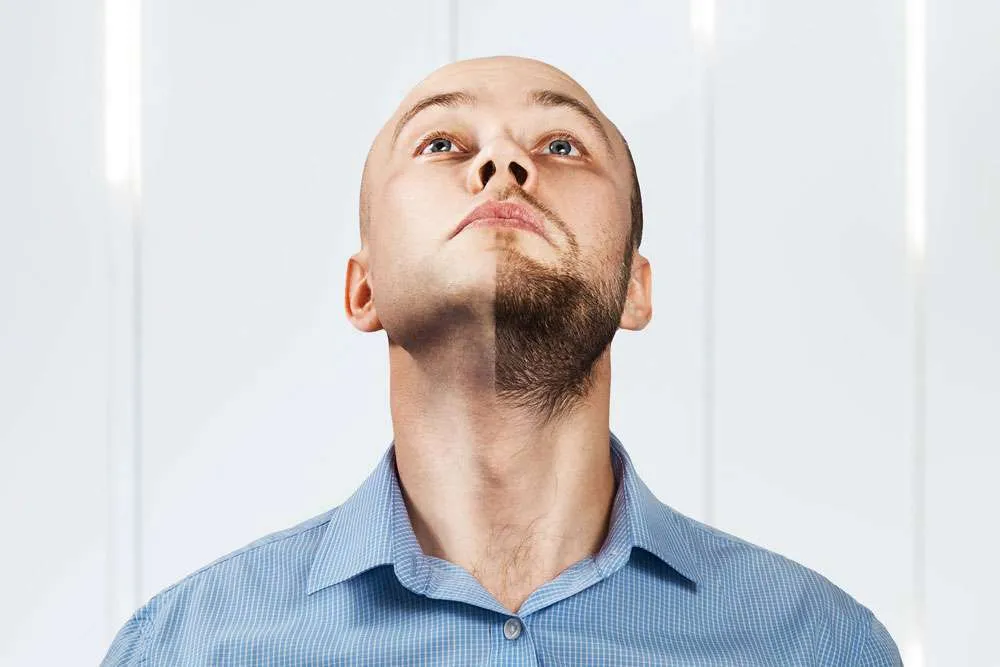FUE Hair Transplant
Follicular Unit Extraction (FUE)
Follicular Unit Extraction (FUE) is a method of hair transplantation that involves the extraction of individual hair follicles from the donor site and their transplantation to the recipient site. The goal of the procedure is to improve the appearance of the scalp and restore hair growth.
FUE is a minimally invasive procedure that is performed under local anesthesia. The procedure involves the use of a small punch tool to extract individual hair follicles unites or grafts from the donor area (typically the back of the head). The extracted grafts are then transplanted to the recipient area (typically the front or top of the head).
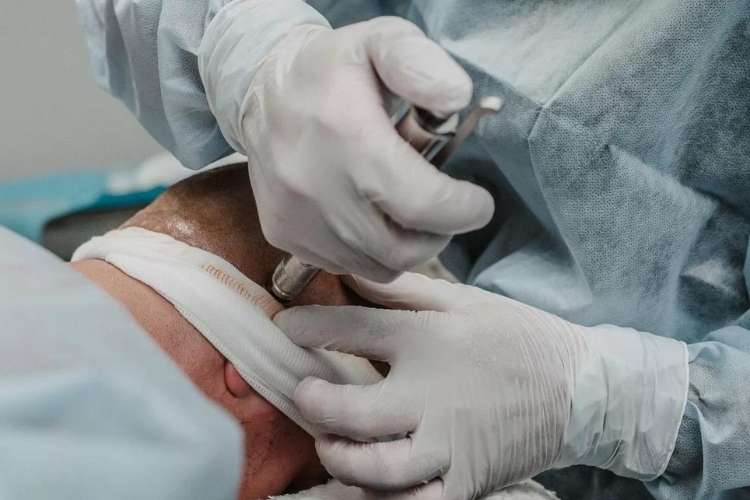
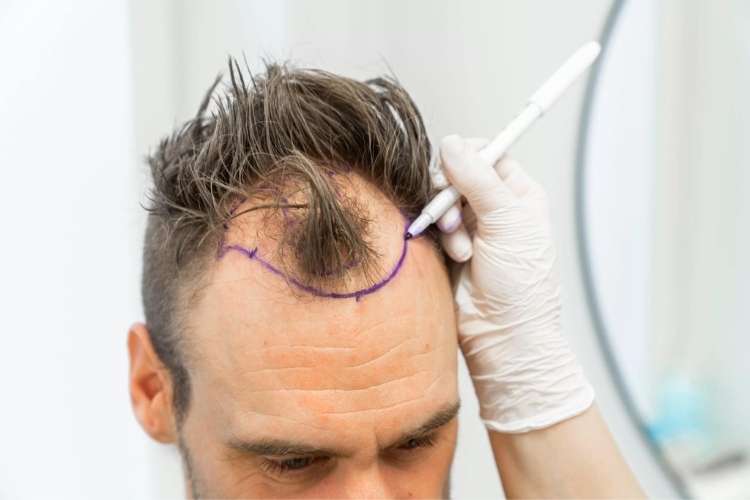
- Minimally invasive procedure: The procedure carried out under local anesthesia. Individual hair follicles are removed during the process from the donor site, usually the back of the head, using a small punch tool. In comparison to the traditional FUT methods, this indicates that there is less tissue damage and less scarring.
- Faster recovery time: Recovery time is shorter after FUE than after FUT because it is a less invasive process and does not require for the removal of a strip of scalp. Additionally, since no stitches are needed, patients can resume regular activities more rapidly and can go back to work in a few days.
More natural-looking results: FUE enables more control and precision during the implantation procedure, which produces more realistic-looking results. The odds of survival can be increased because the hair follicles are not handled or altered in any way because they are implanted right away after being extracted.
- No linear scarring: FUE does not leave a linear scar on the scalp, which is one of its primary benefits. A piece of scalp is removed during FUT, and the incision is then stitched up. This results in a linear scar that is noticeable on the back of the head. The hair follicles are extracted using FUE, which leaves very little scarring that is difficult to see because the incisions used are tiny and spread all over the donor area.
- No need for stitches: Stitches can hurt and lead to complications. As a result, FUE is safer and more comfortable than the conventional FUT technique.
This guide will walk you through the FUE hair transplant procedure step-by-step and explain what to anticipate at every stage. The hair transplant expert will give you detailed directions on how to get ready for the procedure before the surgery. The doctor might advise you to stay away from supplements or medications that raise the chance of bleeding. Additionally, you must give up smoking and abstain from drinking for a few days before to the procedure.
Consultation
A consultation with a certified and experienced hair transplant expert is the first stage in the FUE hair transplant procedure. The experts will examine your scalp during this consultation to determine if you are suitable for the procedure. They will also talk with you about your objectives, anticipations, and medical background.
Hairline Design
Creating the hairline comes after the initial consultation. A hairline design that matches your facial characteristics and appears natural will be drawn by your hair transplant expert. In order to achieve a satisfactory outcome that matches your expectations, the hairline design is essential. After that your hair will be cut short, to a length of 1-2 millimeters, in order to make it easier to remove the hair grafts and implant them in their new places.
Anesthesia Administration
After your hair is trimmed, the surgeon will apply local anesthesia to the donor area and the recipient area. The donor area is typically the back or sides of your head. This numbs the area and ensures that you don’t feel any pain during the procedure.
Graft Extraction
The next step is to extract the hair follicles from the donor area. The hair transplant expert will use a specialized tool called a micro-punch to remove each hair follicle individually. This is a meticulous process that requires skill and precision. The extracted hair follicles are kept in a solution to keep them healthy and viable.
Hair Channel Creation
The surgeon will make very small incisions or hair channels in the recipient area after removing the grafts from the donor area. To ensure that the incisions are small and exact, a specialized tool with a sharp blade is used to make them. The depth and direction of the incisions influence the density and growth pattern of the hair.
Graft Implantation
In the final stage, the hair follicles are then implanted into the recipient site. Each graft will be inserted into the incisions made in the previous stage. This is a sensitive stage that requires close attention to every little detail. To guarantee that they develop naturally, the grafts are implanted at the proper depth and angle.
Postoperative Care
The hair transplant experts will give you detailed directions on how to take care of your scalp after the procedure. For a few days, you must stay out of the sun and not engage in strenuous activities. To prevent inflammation and infection, you will also need to take some prescribed medications. After a few weeks, the transplanted hair will fall out, but after a 2-3 few months, the transplanted grafts will begin to produce new hair.
FUE hair transplant surgery can help you regain your confidence and hair in a secure and efficient manner. The process is minimally invasive and yields natural results. To execute the operation, a qualified and experienced hair transplant expert must be chosen. It is possible to make sure that the transplanted hair follicles take root and develop naturally by adhering to the postoperative care guidelines. As new hair grows, you’ll eventually have a full head of hair to appreciate.
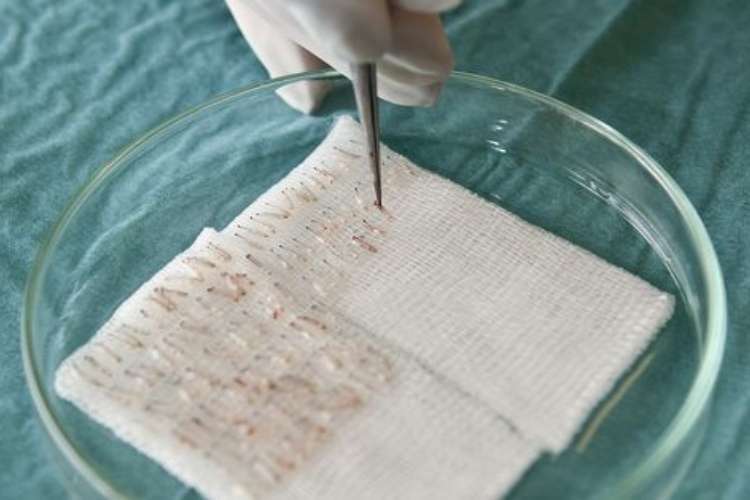
Book now and start free WhatsApp Consultation
Change your look with hair transplant
Reviews About Us
Hair Transplant Experience of Our Patients
This is me just 1 week after - no pain, no issues at all.
Frequently Asked Questions
What is a hair transplant?
A hair transplant is a surgical process that includes moving hair follicles from a donor site on the scalp, usually the back or sides of the head, to the balding or thinning areas of the scalp. Hair transplant can also be used to regrow hair in other places like the beard, eyebrows, and eyelashes in addition to treating male and female pattern baldness.
What are the different techniques used in hair transplant?
There are several different techniques used in hair transplant surgery, including Follicular Unit Extraction (FUE), Sapphire FUE, and Direct Hair Implantation (DHI).
FUE is a minimally invasive technique that involves extracting individual hair follicles from a donor area of the scalp, usually at the back of the head, using a small, specialized tool. The follicles are then transplanted to the bald or thinning areas of the scalp. FUE results in less scarring and a shorter recovery time compared to traditional hair transplant methods.
Sapphire FUE is a variation of the FUE technique that uses a specialized tool made of sapphire to create incisions for hair follicle extraction. The use of sapphire is believed to result in less trauma to the scalp, less bleeding, and faster healing time. Sapphire FUE is particularly beneficial for patients with curly or coarse hair, as the sapphire blade allows for more precise incisions that can accommodate the unique angle and direction of curly hair follicles.
DHI is a technique that involves using a specialized tool called a Choi implanter to insert the hair follicles directly into the recipient area without the need for incisions. This technique allows for greater control over the angle, depth, and direction of each implanted hair follicle, resulting in a more natural-looking hairline. DHI is particularly beneficial for patients who require a smaller number of hair grafts or who have limited donor hair available.
Each hair transplant technique has its own unique advantages and disadvantages, and the best technique for each patient will depend on their individual needs and goals.
How long does hair transplant operation last?
The length of a hair transplant operation can vary depending on several factors, including the extent of the hair loss, the number of hair grafts needed, and the technique used. In general, a typical hair transplant procedure can take anywhere from 4 to 8 hours to complete.
Will transplanted hair look natural?
The short answer is yes. Creating a natural looking hairline in the design stage before the hair operation is very important for overall natural looking hair. The depth and direction of the channels created during the surgery play a significant role
How long does it take for the new hair to grow?
Your hair will start growing in 3 months after the surgery, in 6 months you can observe some satisfying results however full results are generally obtained 12 months after the operation. After that hair continues to grow for a lifetime.
How many sessions of hair transplant are required?
Can the donor hair be taken from places other than the nape area?
The nape region, also referred to as the “donor area,” is the most typical location from which donor hair is extracted during hair transplant surgery. This is due to the hair’s tendency to be thicker and more closely packed in this region, which makes it usually more resistant to balding.
The most common area from which donor hair is taken for hair transplant surgery is the nape area (the back and sides of the head), which is also known as the “donor area.” This is because the hair in this area is typically more resistant to balding and tends to be thicker and more densely packed.
However, in some rare cases hair transplant experts might have to use donor hair from the beard, chest, or back, among other places on the patient’s body. This is called “body hair transplantation,” is frequently used when there is insufficient donor hair in the nape region or if the patient has had numerous hair transplant surgeries.
What is the difference between a hair and a graft?
A hair is a single, thin strand of protein that grows from the hair follicle located in the dermis of the skin. A graft, on the other hand, is a small section of skin that contains hair follicles. During hair transplant grafts are removed from a donor area, typically the back of the head, and transplanted to a recipient area where hair growth is desired. Each hair transplant unit (graft), is taken from the patient’s own scalp, which is the reason why the transplanted hair has a natural look and it is permanent. One graft contains 1-5 hair follicles.
Will a hair transplant leave a scar?
The short answer is that it depends on the technique used for hair transplant, the FUT method leaves a single-line wound scar in the nape area between the two ears where hair follicles are extracted whereas FUE and DHI methods leave very little to no noticeable scars in the donor area. We prefer the FUE (Follicular Unit Extraction) and DHI (Direct Hair Implantation) methods where grafts are harvested individually from the scalp in the nape area with the help of a Micromotor leaving very little to no scars.
What are the advantages of the FUE method?
The FUE method has many advantages including; visually undetectable scars, more comfortable, faster recovery time, less pain, less risk of any infections, better results and healthier hair, also there is no general anaesthesia required during FUE hair transplant.
What are the advantages of the DHI method?
Thanks to the “Choi” pen used during the DHI method, faster planting is possible and the recovery time and hair growth are faster. The DHI method is also performed without the need for any incision. However, the reason why so many patients prefer the DHI method is that it does not require shaving the hair during the transplantation process.
Does transplanted hair last forever?
Transplanted hair can last a lifetime, but it is important to note that the hair in areas not transplanted may continue to thin naturally with age. Additionally, transplanted hair is subject to the same environmental factors and styling practices as one’s original hair, so proper care is important to maintain the health and longevity of the transplanted hair.
Does hair transplant surgery have any side effects or complications?
Hair transplant is considered a very safe operation with very minimal side effects like redness and swelling, and itching there are usually very mild and will go away within a few days. Rarely side effects such as infection, can also happen sometimes if you choose an inexperienced team to perform the surgery or if you do not follow the instructions they provide for you after hair transplant and do not take care of your new hair.
Can hair be transplanted to the beard?
Yes, beard hair can be transplanted using the same techniques as scalp hair transplantation. In fact, beard hair transplantation has become increasingly popular in recent years as more men seek to achieve fuller and more defined beards. The procedure involves extracting individual hair follicles from a donor area of the scalp or beard, and then transplanting them to the desired area of the beard using FUE or another hair transplantation technique. The transplanted hair follicles will continue to grow in their new location and can be trimmed, styled, and cared for just like natural beard hair.
Is it possible to transplant eyebrows?
Yes, it is possible to transplant eyebrows using the same techniques as scalp hair transplantation. Eyebrow transplantation is a cosmetic procedure that is typically performed on individuals who have thin, sparse, or patchy eyebrows due to genetics, over-plucking, or other causes. The procedure involves extracting individual hair follicles from a donor area, typically the scalp, and then transplanting them to the desired area of the eyebrow using FUE or another hair transplantation technique.
The hair transplant expert will carefully select and place the transplanted hair follicles in a way that mimics the natural growth pattern of eyebrow hair, taking into consideration factors such as the angle, direction, and density of the hair. The transplanted hair follicles will continue to grow in their new location and can be trimmed and shaped to achieve the desired eyebrow shape and thickness.
What is the success rate of hair transplant surgery?
The success rate of hair transplant surgery varies depending on a number of factors, such as the type of procedure used, the skill and experience of the surgeon, the quality and quantity of donor hair, and the patient’s overall health and lifestyle factors. However, in general, hair transplant surgery has a high success rate and is considered to be a safe and effective long term treatment for hair loss.
According to the International Society of Hair Restoration Surgery (ISHRS), the overall success rate for hair transplant surgery is over 90%, with most patients experiencing significant improvement in the appearance of their hair within 6 to 12 months after the procedure. The success rate can vary depending on the specific technique used, with some techniques having higher success rates than others.
Additionally, it is important for patients to follow post-operative instructions and to maintain a healthy lifestyle in order to optimize the success of the procedure.
Do You Have A Question?
Didn’t find your question? You can ask any questions you have regarding hair transplant in Turkey right now!






